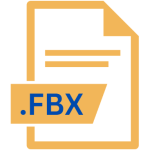.B3D File Extension

Blitz3D Entity Model File
| Developer | Blitz Research |
| Popularity | |
| Category | 3D Image Files |
| Format | .B3D |
| Cross Platform | Update Soon |
What is an B3D file?
The .B3D file extension is associated with Blitz3D, a programming language and game development environment created by Blitz Research.
This file type is used for storing 3D model data, specifically entity models, within Blitz3D projects. These files are integral to the creation and management of 3D objects in games and simulations developed using Blitz3D..B3D
More Information.
Blitz3D was initially released in 2001 as a successor to Blitz Basic and was intended to offer an easy-to-use platform for developing 3D games without requiring extensive knowledge of more complex programming languages or graphics APIs.
The .B3D files were part of this vision, serving as a means to define 3D models in a format that Blitz3D could directly utilize.
These files contained information about the model’s geometry, textures, and other properties necessary for rendering within Blitz3D.
Over the years, while Blitz3D has become less prominent compared to newer game development platforms, the .B3D file format remains a specialized format for those continuing to use or maintain projects within the Blitz3D environment.
Origin Of This File.
Blitz3D was developed by Blitz Research Ltd., a company known for its focus on game development and multimedia programming tools.
Released in the early 2000s, Blitz3D was designed to simplify 3D game development by providing an accessible scripting environment.
The .B3D file extension was introduced as part of this ecosystem to facilitate the storage and manipulation of 3D models used in Blitz3D applications.
File Structure Technical Specification.
A .B3D file is a binary file format that encapsulates 3D model data in a way that is optimized for use within Blitz3D. The file structure includes several key components:
- Header: This section contains metadata about the file, including version information and file identification.
- Vertices: Coordinates that define the positions of points in 3D space.
- Faces: Definitions of the surfaces of the model, typically represented as triangles or polygons.
- Textures: References to texture maps applied to the model’s surfaces.
- Materials: Properties and settings that define how textures and surfaces interact with light.
- Animations: Data related to the movement and transformations of the model.
The .B3D format supports various features necessary for 3D rendering, including vertex normals, texture coordinates, and skeletal animation.
It is relatively simple compared to more modern formats like .FBX or .OBJ, which support more advanced features and optimizations.
How to Convert the File?
Given the specialized nature of the .B3D format, converting these files to other formats can be necessary for broader compatibility or to utilize modern tools. Here are some methods to convert .B3D files:
- Using Blitz3D Export Functions: Blitz3D itself provides options to export models in other formats, such as
.X(DirectX) or.OBJ. This method is straightforward if you have access to Blitz3D and the original project files. - Third-Party Tools: Several third-party tools and converters can handle .B3D files. Tools like B3D Converter or Blender with specific plugins can be used to convert .B3D files to more widely supported formats like
.FBXor.OBJ. - Manual Conversion: For more complex conversions or when specific features are required, manual conversion might be necessary. This involves exporting the model from Blitz3D in an intermediate format and then using other software to complete the conversion.
Advantages And Disadvantages.
Advantages:
- Integration with Blitz3D: The .B3D format is perfectly tailored for Blitz3D, ensuring seamless compatibility and ease of use within the environment.
- Simplicity: Its relatively straightforward structure makes it easier to work with for those familiar with Blitz3D, particularly for beginners in 3D game development.
- Performance: As a lightweight format, .B3D files are efficient in terms of loading and processing times within the Blitz3D engine.
Disadvantages:
- Limited Features: The format lacks support for some advanced 3D features found in more modern formats, which can be a limitation for complex models or animations.
- Obsolescence: With the decline in Blitz3D’s popularity and the emergence of newer tools and formats, .B3D files are less commonly used, which can limit the availability of support and tools for working with them.
- Compatibility: The .B3D format is specific to Blitz3D, which can pose challenges when trying to use these models in other 3D development environments or game engines.
How to Open B3D?
Open In Windows
- Blitz3D: The primary method for opening .B3D files is through Blitz3D itself. The program provides full support for these files and allows for direct manipulation and rendering within the Blitz3D environment.
- Blender: With the appropriate plugin or script, Blender can be used to open and convert .B3D files, offering a modern and versatile platform for further editing.
Open In Linux
- Blender: Blender is also available for Linux, and it can handle .B3D files with the right plugins. This provides a useful alternative for Linux users working with Blitz3D models.
- Wine: Running Blitz3D through Wine, a compatibility layer for running Windows applications on Linux, can be used to access and work with .B3D files directly.
Open In MAC
- Blender: As with Windows, Blender is a viable option on macOS for opening and converting .B3D files. Installation of the necessary plugins or scripts will enable compatibility.
- Virtual Machines: Running Blitz3D on a Windows virtual machine is another option if direct support on macOS is required.












